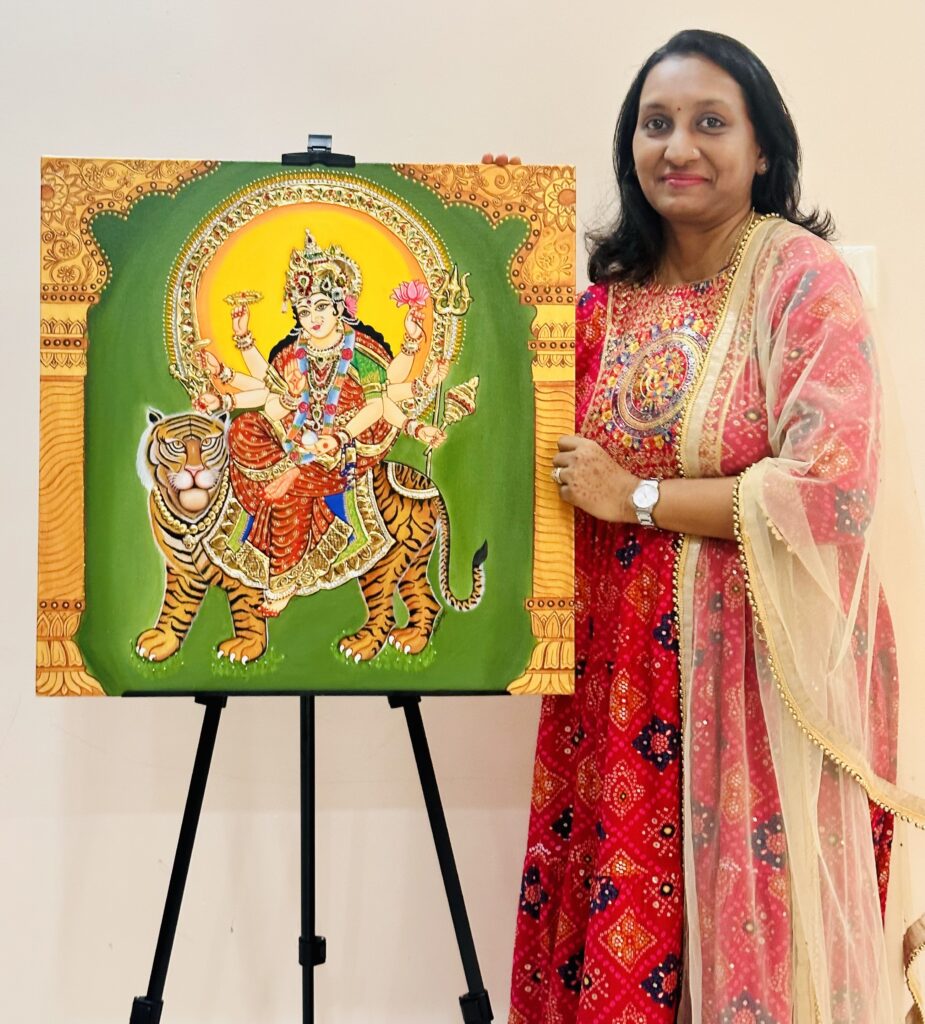
A visit to the Shiva Temple in Ettumanoor, Mattancherry Palace and Vadakkumnatha kshetram will introduce us to a very beautiful and unique painting style, called as Kerala Mural painting. Kerela Mural Paintings dates back to 12th century where this kind of art form enjoyed a royal patronage. Kerela mural paintings are the paintings depicting Hindu Mythology in Kerela. The walls is ancient temples and historic places are adorned with these beautiful mural paintings in Kerela. The intricate designs and vibrant colours combinations used in this painting is what makes this painting worth admiring. The masterpieces of Kerala mural art includes the Shiva temple in Ettumanoor, the Ramayana murals of Mattancherry Palace and Vedakkumnatha kshetram. Other fine mural paintings are depicted in temples at Guruvayur, Aymanam, Thodeekkalam temple in Kannur and Sri Padmanabha Swamy Temple at Trivandrum. The Kerala mural paintings remains the most iconic symbol of the region’s culture and artistic traditions.

Kerala mural is an artwork painted or applied directly onto walls, ceilings, or any other permanent surface. In murals architectural elements of the given space are harmoniously Incorporated into its creation. Today the trend has shifted from wall murals to those painted on canvas and paper. The materials used in mural art, work like pigments, brushes, gum, etc are all taken and made of natural materials like minerals and plants. The most frequently used pigments in Kerala mural our saffron-red, saffron-yellow, Green, red, white, blue black. Green, red, white, blue, Black, yellow and golden yellow. Every mural is a testament to the depth of dedication the Artist have to their art. The temples and palaces of Kerala are all a visual treat wherein the sagas of ancient Hindu gods and goddesses unfold. An ideal souvenir to be treasured for a lifetime, Kerala, murals or a symbol of natural beauty and grace, elegance, and simplicity and of pious devotion.
The scriptural basis of these paintings can be found in the Sanskrit texts, Chithrasoothram – (Chitrasutra is a part of the Vishnu Dharmottara Purana, a book written in Sanskrit about 1500 years ago. This book answers hundreds of questions about what a painting is, why, its purpose, role, relationship with the painter, connoisseurs, and other arts. Chitrasutra will be useful to understand the true Indian painting.)Tantrasamuchaya, the fifteenth century text authored by Narayanan, Abhilashitartha Chintamani of the twelfth century and Silparatna by Sreekumaran of the sixteenth century. Iconography of the mythological character in murals are based on the Dhyanaslokas.

The murals of Thirunadhikkara Cave Temple (now ceded to Tamil Nadu) and Tiruvanchikulam are considered the oldest relics of Kerala’s own style of murals. The masterpieces of Kerala mural art include: the Shiva Temple in Ettumanoor, the Ramayana murals of Mattancherry Palace and Vadakkumnatha kshetram.
Other fine mural paintings are depicted in temples at Trikodithanam, Vaikom Temple, Pundarikapuram, Udayanapuram, Triprangode, Guruvayoor, Kumaranalloor, Aymanam, the Vadakkunathan temple in Trichur, the Thodeekkalam temple in Kannur and the Sri Padmanabhaswamy temple at Thiruvananthapuram. Other mural sites are in the churches at Ollur, Chalakkudy, Kanjoor, Edappally, Vechur, and Mulanthuruthy, and at palaces such as the Krishnapuram Palace near Kayamkulam and the Padmanabhapuram Palace.
Traditionally the painting involves four different processes. These 4 processes are Preparation of the ground (granite and laterite walls); Sketching of the outline; Application of colours and Addition of decorative details. Sanskrit texts discuss in detail the style, effectiveness of different colours, desirable combinations that could be brought out by mixing various pigments and methodology of preparing the base for application of colors and for preparation of colors from different natural sources in general terms.
Although the traditional mural artisans were under the patronage of various rulers in Kerala, under British administration the art form suffered enormously, even at the danger of extinction. After India’s independence in 1947, a revival of mural tradition in Kerala took place as major temples in Kerala. The Centre for Study of Mural Paintings, a school established by Guruvayur Dewaswom Board in the Thrissur district of Kerala under the chief instructorship of Mammiyoor Krishnan Kutty Nair, represents this revival phase, as does the Sree Sankaracharya University of Sanskrit in Kalady under the instructorship of Dr.Saju Thuruthil.
About Artist :

Shubham Aggarwal is a mother of two daughters and artist by profession; residing in Kollam, Kerela. Art has always been her passion and after graduating with a marketing and mass communication degree, she began her art career in year 2021 named as “Kreyaakreations”. She is an ardent lover of our Indian art culture that she represents and showcases through her paintings. She has been making art in various forms such as Kerala murals, Tanjore, and acrylics. She also enjoys doing digital art and has been and an NFT Artist on WazirX platform. On her art journey she has successfully done few commission, artworks and collaborated with Rajasthan Studio for art workshop.
As an Indian Art lover her aim is to spread the rich Indian art across the globe.
Instagram page: @Kreyaakreations